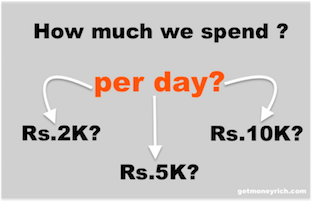Discover the concept of skiplagging. It is a controversial travel hack that can potentially save on airfares for us. Learn how it works and its benefits vs risks. We must also know why we Indian travellers should weigh cost savings against potential penalties before considering skiplagging. Not many of us in India know about skiplagging so this blog-post will be more of a beginner-friendly guide for smarter travellers.
When it comes to saving money, most of us are on the lookout for clever hacks. Whether it’s cutting unnecessary expenses or finding a deal, every rupee saved can be invested or spent wisely elsewhere. One such hack in the world of air travel is skiplagging, also called hidden-city ticketing.
This strategy, while effective in reducing travel costs, comes with its fair share of risks.
For we Indian travelers, skiplagging can be a concept that can drive curiosity. So, I thought, why not blog about it.
Is it worth trying? Let’s dive in and understand this travel hack in detail.
What Is Skiplagging?
Skiplagging is a strategy where a traveler books a flight with a layover at their intended destination and skips the final leg of the journey.
For example, suppose you want to fly from Mumbai to Delhi. Flights from Mumbai to Delhi costs a minimum of Rs.6,000. But a flight from Mumbai to Lucknow with a layover in Delhi is costing costing only Rs.4,000.
In this case, you can book the cheaper option and disembark at Delhi cancelling the further travel from Delhi to Lucknow. This is called skiplagging.
Why Do Airlines Offer Cheaper Layover Flights?
Airfare pricing algorithm can be very complex.
Airlines sometimes price longer routes lower than direct ones due to competition, demand, or route-specific promotions. Generally the opposite happens, right? Direct flights are often found cheaper.
Why skiplagging happens? A connecting flight to a less popular destination might be discounted to fill seats. Such discounted flights will includes a layover in a major hub city (like Delhi).
Skiplagging exploits this pricing model to save money.
Why Should Indian Travellers Care About Skiplagging?
- Cost Savings: Air travel in India, especially between metro cities, can be expensive. Skiplagging can offer a way to reduce these costs (though it is less likely in India). I will personally use the saved money and redirect it toward investments, emergency funds, or for a better experience during my ongoing trip.
- Budget-Friendly Domestic and International Trips: Hidden-city ticketing might be especially useful for international travel. In international trips, price differences are more significant hence skiplagging can save more money for us.
- Personal Finance Philosophy: Every rupee saved is a rupee earned. For people like me who is keen on optimizing their finances, skiplagging (as it is a way to save money) generally aligns with my broader goal of making smarter money decisions.
Every money saved can be used wisely later.
The Risks of Skiplagging
While it sounds tempting, skiplagging comes with its own set of risks:
- Violation of Airline Policies: Most airlines explicitly prohibit skiplagging in their terms and conditions. Violating these can lead to:
- Cancellation of the remaining itinerary.
- Loss of frequent flyer benefits.
- Fines or extra charges for the skipped segment.
- No Checked Baggage: If you check in your luggage, it will be sent to the final ticketed destination—not your layover stop (In our example journey, the checked-in luggage will go to Lucknow and will not be available in Delhi). This makes skiplagging suitable only for those who are ready to travel light to take advantage of skiplagging.
- Repetitive Use Can Raise Red Flags: Using skiplagging frequently on the same airline or route can lead to detection, possibly resulting in being blacklisted.
- One-Way Only: You cannot use skiplagging for round-trip tickets. Skipping one leg will automatically cancel the return ticket.
When Skiplagging Makes Sense for Indians
Flights connecting major Indian hubs like Delhi, Mumbai, or Bengaluru to international destinations may have opportunities for skiplagging. For example, a Delhi-Dubai flight with a layover in Mumbai might be cheaper than a direct Delhi-Mumbai ticket.
Skiplagging may also work for domestic routes with significant price differences, like Bengaluru to Hyderabad via Mumbai.
How to Safely Try Skiplagging
If you’re considering skiplagging, here are some tips to minimize risks:
- Travel Light: Use only carry-on luggage to avoid complications with checked baggage.
- Avoid Frequent Flyer Accounts: Don’t link your frequent flyer number to tickets booked using this method.
- Book One-Way Tickets: Round-trip tickets won’t work since skipping one leg cancels the rest.
- Limit Use: Don’t overuse this tactic, as repetitive behavior can flag you for penalties.
Conclusion
Most of us believe in maximizing value for every rupee spent.
Skiplagging is an innovative way to save on airfares, but it’s not for everyone.
The risks – especially losing frequent flyer privileges or facing penalties, might outweigh the savings for some.
However, if used sparingly and strategically, skiplagging could help reduce travel costs. The key lies in understanding the risks and planning it carefully.
I will personally use skiplagging only when the potential saving is high. For smaller saving, I think, the risk is not worth. When savings are more, I would rather use the saved amount to invest in stocks or build an emergency fund.
Skiplagging is a creative travel hack, but it requires caution and planning. For Indian travelers, its utility may be limited to specific scenarios, especially on international routes or high-demand domestic flights.
If you decide to try it, ensure you’re prepared for potential consequences and use the savings wisely.
If you found this article useful, please share it with fellow investors or leave your thoughts in the comments below!
Have a happy investing.



